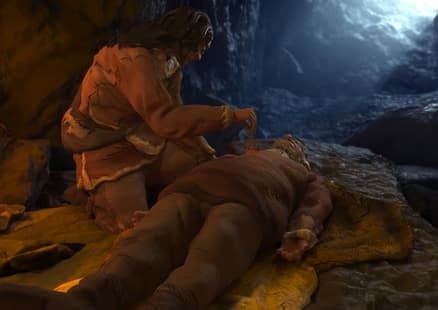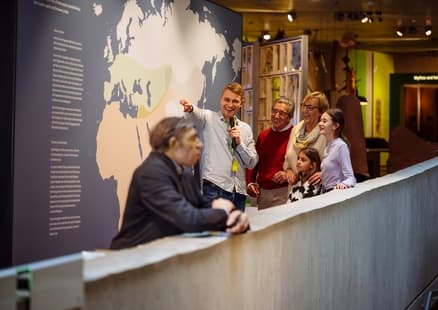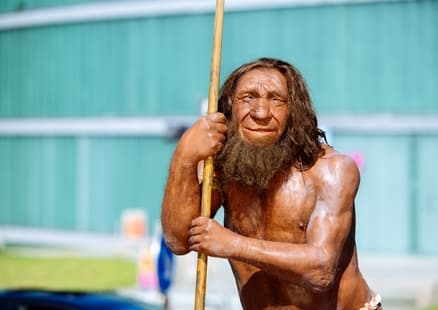What did our ancestors believe - and how did they deal with life, death, and the incomprehensible?
In the fifth section of the Neanderthal Museum, you can explore the spiritual side of humanity: from early burials and mysterious cave art to the world's major religions. You will learn how myths arose, how they shaped communities – and why humans have always sought answers to the big questions.

Even in early cultures, creation myths emerged that brought order to chaos and gave meaning to life. Gods, ancestors, or supernatural forces explained the origin of the world—and humanity's place in it. Unlike modern cosmology, myths cannot be proven—nor do they need to be. They are believed, lived, and passed down.

Funerals are more than just farewells - they provide stability, community, and orientation. Neanderthals were the first known humans to bury their dead - a sign of compassion and complex thinking.

As early as 60,000 years ago, Neanderthals painted rock walls with ochre. Geometric patterns testify to a sense of aesthetics, but their meaning remains a mystery. Naturalistic depictions by Neanderthals have not yet been found; these seem to have been created later by Homo sapiens sapiens.
Neanderthals carved patterns into bones, creating small abstract works of art that could be carried around even when living a nomadic lifestyle. Later, Homo sapiens sapiens created figurative motifs such as animals and humans. Particularly striking is the fact that female figures with similar designs can be found throughout Eurasia - they are an expression of a common symbolic and formal language.

Today's world religions developed over thousands of years. Despite all their differences, they share central elements: sacred texts, rituals, buildings, mediators – and the search for the “right way to live.” Even though world religions paint different pictures of God, humanity, and the world, they all stem from the same human need for meaning, order, and belonging.

Then visit the Neanderthal Museum in Mettmann!
Experience cave art, burial rituals, and the spiritual side of the Stone Age—in an exhibition that raises big questions and provides impressive answers.